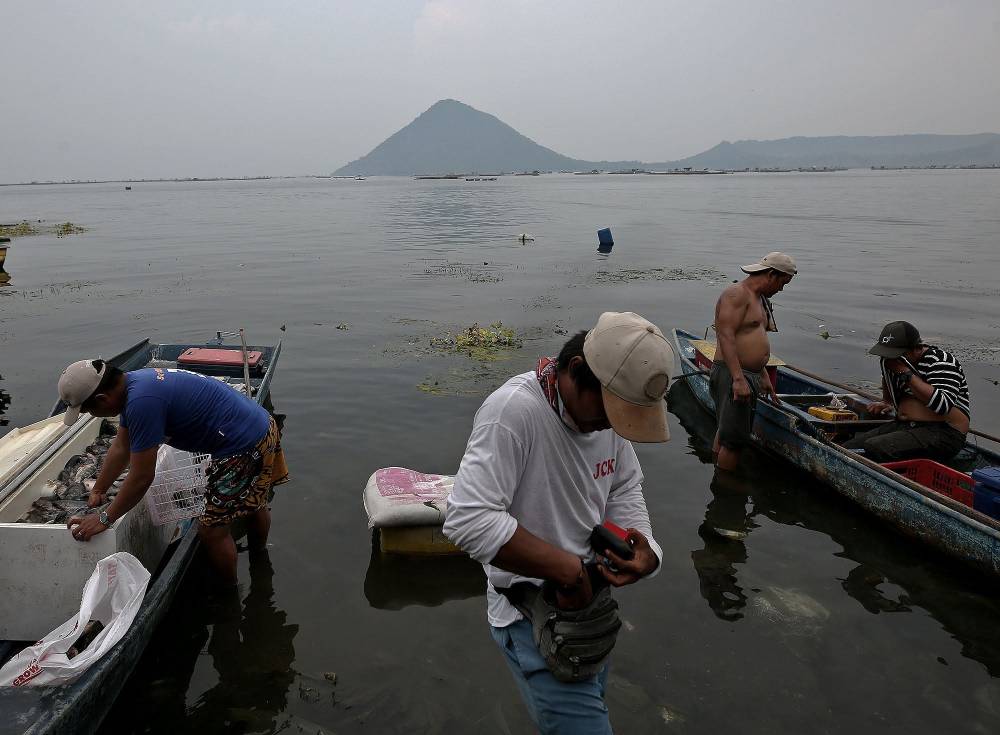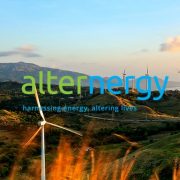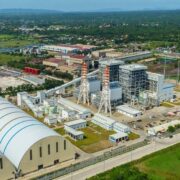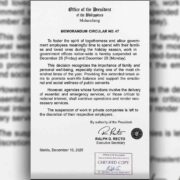Folk warned vs exposure to Taal’s vog due to health risks

Residents in areas around Taal Volcano should avoid staying outdoors or take precautionary measures such as wearing face masks to prevent exposure to harmful fumes emitted by the ongoing phreatic eruption.
In a television interview on Tuesday, Philippine Institute of Volcanology and Seismology (Phivolcs) Director Teresito Bacolcol downplayed the possibility of Taal Volcano having an explosive eruption in the coming days, as it has exhibited fewer seismic activities in the past 12 days.
“We are advising residents around the volcano that whenever they observe vog (volcanic smog), they should refrain from doing outdoor activities … stay inside their houses and close the doors and windows,” he said.
“If going outside cannot be avoided, they (must) protect themselves by wearing a facemask—N95 if possible; and if in case they inhale the sulfur fumes, especially those with existing health conditions, they need to see medical doctors,” Bacolcol added.
The Phivolcs official reminded the public about what he termed as Taal’s ongoing degassing or steaming activity in recent days, which emits sulfur dioxide into the atmosphere and produces fog in surrounding areas.
Vog threat
Based on Tuesday’s weather forecast, the southwest direction of the wind has posed a threat of vog to the city of Lipa and the neighboring towns of Laurel, San Nicolas, Agoncillo, Talisay, Balete, Lemery, Cuenca, Malvar, Taal, Lian and Nasugbu.
However, the ongoing volcanic activity of Taal does not indicate that it is set to have an explosive eruption anytime soon.
“The release of sulfur dioxide is just one of the parameters for us to predict a threat of a volcanic eruption. It is normal for volcanoes to release sulfur dioxide, which comes from magma moving up through the volcano,” he said.
Phivolcs has not monitored any volcanic activity in Taal over the past 24 hours, Bacolcol said, and there has been no single volcanic earthquake since Aug. 8.
“So, these are good indicators since the presence of volcanic earthquakes are manifestations of rising magma and crushing the rocks underneath the Earth’s surface,” he said, adding: “The absence of earthquakes means that magma is not rising.”
But since the ongoing phreatic eruption is emitting sulfur, which leads to the formation of vog, the Phivolcs chief cautioned the public against going near the volcano.
“The absence of activity in the past 12 days should not mean that we can be complacent—that with long-term deflation, the chances of a massive volcanic activity on the scale of the 2020 eruption, although still possible, is remote for now,” he said.
“We should always be vigilant and as soon as we monitor any changes to the parameters we are watching, we will immediately alert the public about it,” he added.
Fair air quality
On Tuesday, the Department of Environment and Natural Resources (DENR) flagged three areas with a “fair” air quality index (AQI)—or below the safest “good” rating—on particulate matter and sulfur dioxide. This came a day after vog from Taal reached parts of Metro Manila.
The DENR noted that Caloocan City had a “fair” air quality for PM2.5, which are fine particles up to 2.5 millimeters (mm) that could reach one’s bloodstream when inhaled. Taguig City also had a “fair” air rating, but for only for PM10, or particles up to 10 mm in diameter, while Tagaytay City was also classified as “fair” AQI for sulfur dioxide.
According to DENR, a fair AQI is “acceptable,” but cautioned about “some pollutants” that could cause health concerns for certain groups “unusually sensitive to air pollution.” Other Metro Manila cities, such as Paranaque, Makati, Taguig and Pateros, registered a “good” AQI. AQI is measured on a scale of 0 to over 300, with 0 to 50 being the best air quality and above 300 being the worst at an “extreme” rating. A fair AQI has a range of 51 to 100.
Health risks
The environment department explained that volcanic smog, which poses health risks to those with preexisting illnesses, is formed when sulfur dioxide and other pollutants released from volcanic activity “interact chemically with atmospheric moisture, oxygen, dust and sunlight.” Vog can worsen air quality through “increased PM” and “elevated sulfur dioxide levels.” “Vog contains fine PM, such as sulfate aerosols, that can reduce visibility,” DENR said, explaining that vog’s major component is sulfur dioxide, which can reach “hazardous levels near active volcanoes.”
Although Taal Volcano remains at “low-level unrest” at Alert Level 1, going into Taal’s permanent danger zone is prohibited. Phivolcs also warned that minor ashfall and explosions caused by steam or gas are still likely at Taal. On Monday, some schools in Metro Manila and nearby provinces cancelled classes to prevent exposure to sulfur gas emissions that caused a haze to cover the skies.

















